Design Thinking
This design focused series publishes books aimed at helping Designers, Design Researchers, Developers, and Storytellers understand whats happening on the leading edge of creativity. Todays designers are being asked to invent new paradigms and approaches every day they need the freshest thinking and techniques. This series challenges creative minds to design bigger.
Akshay Kore
Designing Human-Centric AI Experiences
Applied UX Design for Artificial Intelligence

The Apress logo.
Akshay Kore
Bengaluru, India
ISSN 2945-7793 e-ISSN 2945-7807
Design Thinking
ISBN 978-1-4842-8087-4 e-ISBN 978-1-4842-8088-1
https://doi.org/10.1007/978-1-4842-8088-1
Akshay Kore 2022
This work is subject to copyright. All rights are solely and exclusively licensed by the Publisher, whether the whole or part of the material is concerned, specifically the rights of translation, reprinting, reuse of illustrations, recitation, broadcasting, reproduction on microfilms or in any other physical way, and transmission or information storage and retrieval, electronic adaptation, computer software, or by similar or dissimilar methodology now known or hereafter developed.
The use of general descriptive names, registered names, trademarks, service marks, etc. in this publication does not imply, even in the absence of a specific statement, that such names are exempt from the relevant protective laws and regulations and therefore free for general use.
The publisher, the authors, and the editors are safe to assume that the advice and information in this book are believed to be true and accurate at the date of publication. Neither the publisher nor the authors or the editors give a warranty, expressed or implied, with respect to the material contained herein or for any errors or omissions that may have been made. The publisher remains neutral with regard to jurisdictional claims in published maps and institutional affiliations.
This Apress imprint is published by the registered company APress Media, LLC, part of Springer Nature.
The registered company address is: 1 New York Plaza, New York, NY 10004, U.S.A.
For
Mummy and Ajji, for always loving and supporting me despite not understanding what I do.
Kanika,for always loving and supporting me while understanding what I do.
and our cats,Momo and Shifu,for teaching me that keyboards make for great cat beds.

A photo of two cats.
Preface
Many of my favorite science fiction authors predict a worldview that I often find inevitable. Humans evolved to be intelligent, and over time, we will imbue intelligence in our things, systems, and environments. In fact, weve already started doing this. If I ask you to find information about Aryabhata, I am confident you would begin with a Google search. Many of us would prefer our streaming services to suggest things to watch. I used Grammarly, an AI assistant, to correct grammatical mistakes when writing this book. A car that drives itself is just around the corner, and it is not odd to talk to your speaker anymore.
Artificial intelligence is inevitable, and anyone interested in shaping the future should take note. Do an image search for the term artificial intelligence. Many results will be abstract representations of brains, networks, and robots. AI starts to feel like an esoteric technology meant for geniuses in labs churning out sophisticated solutions. While parts of this picture are true, AI is also about how we work, play, and live. It is also about making mundane everyday interactions smarter, more efficient, and easy.
Over the last five years, Ive had the opportunity to work with AI teams in various large companies and start-ups. Ive consumed numerous books, videos, podcasts, articles, and research papers on the topic. Ive spoken to over a thousand people from product management, design, engineering, and research. I realized that there is a gap between a designers understanding of how the technology works and the practical realities of building AI products.
AI brings a fundamental shift to how we design products. Instead of specifying rules, AI teams are responsible for curating outcomes based on algorithms and large amounts of data. AI systems are dynamic, they change over time, and their user experience needs to adapt to this change. This calls for a shift in how we think about designing intelligent products.
Designing good AI products is also a highly collaborative process between different disciplines. It is extremely unlikely that a lone designer will be responsible for building and shipping AI. A big part of being a good AI designer is being a good team member.
Over time, I started compiling my learnings on what works and what doesnt when building AI products and how designers can become effective and impactful team members. This book is merely a distillation of this collected knowledge.
Who Should Read This Book
You should read this book if you are a designer, technologist, researcher, manager, or founder working with or interested in building human-centered AI products. No prior experience with AI is required to read this book. This book can help you identify opportunities for using artificial intelligence to solve problems and create desirable AI products. The contents of this book are also relevant for developers interested in building intuitive interfaces for AI-based solutions.
Overview of Chapters
This book is divided into four parts:
Part 1 (Intelligence) comprises Chapters . We discuss the idea of intelligence, the many meanings of AI, and the view of artificial intelligence this book subscribes to.
Part 2 (Decisions) consists of Chapter , which talks about making decisions regarding incorporating AI in your workflows and finding opportunities for using it in your organization.
Part 3 (Design) focuses on specific design patterns, techniques, and ethical considerations for designing human-centric AI products. This part consists of Chapters .
Part 4 (Teamwork) describes how designers can communicate and collaborate effectively with AI tech teams and consists of Chapters . This section introduces essential AI terminologies, behaviors, and mindsets to help you become an impactful and effective team member.
How to Use This Book
I wrote this book as a practical guide to designing human-centric AI products. And even though Ive written this book, Im pretty sure I will have to keep going back to refer to sections from time to time. The pace at which we forget things is astonishing.
While you might want to finish it in one go, in most cases, you will encounter different types of challenges at different times in your product development journey. I would recommend that you read it once and then use the book as a reference whenever you get stuck or when you want to explore different approaches to solve a problem with AI. Think of it as a working handbook for designing AI products, a tool in your design arsenal.

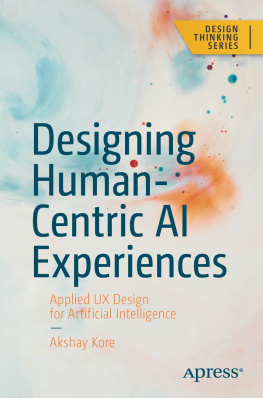
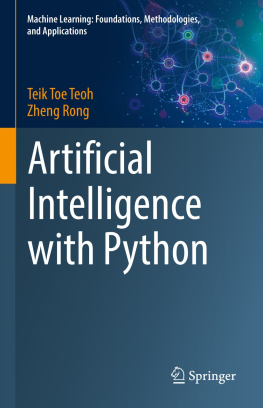
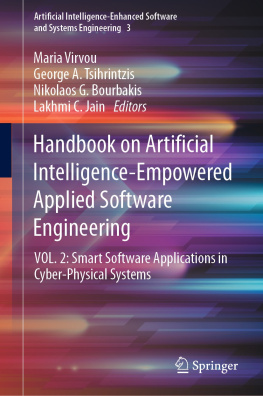
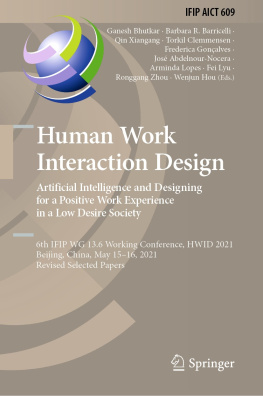
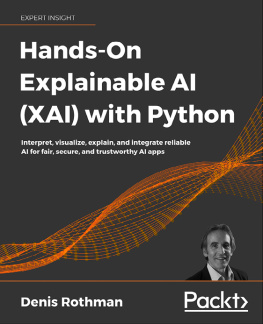
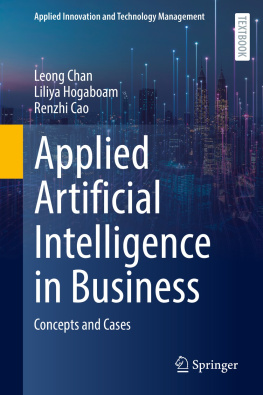

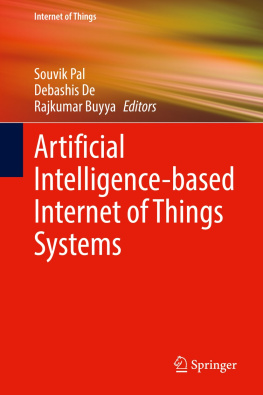
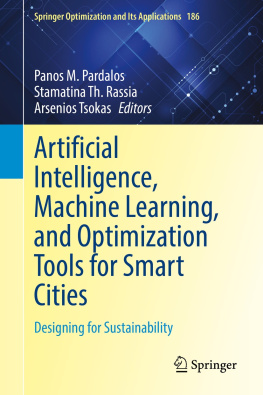


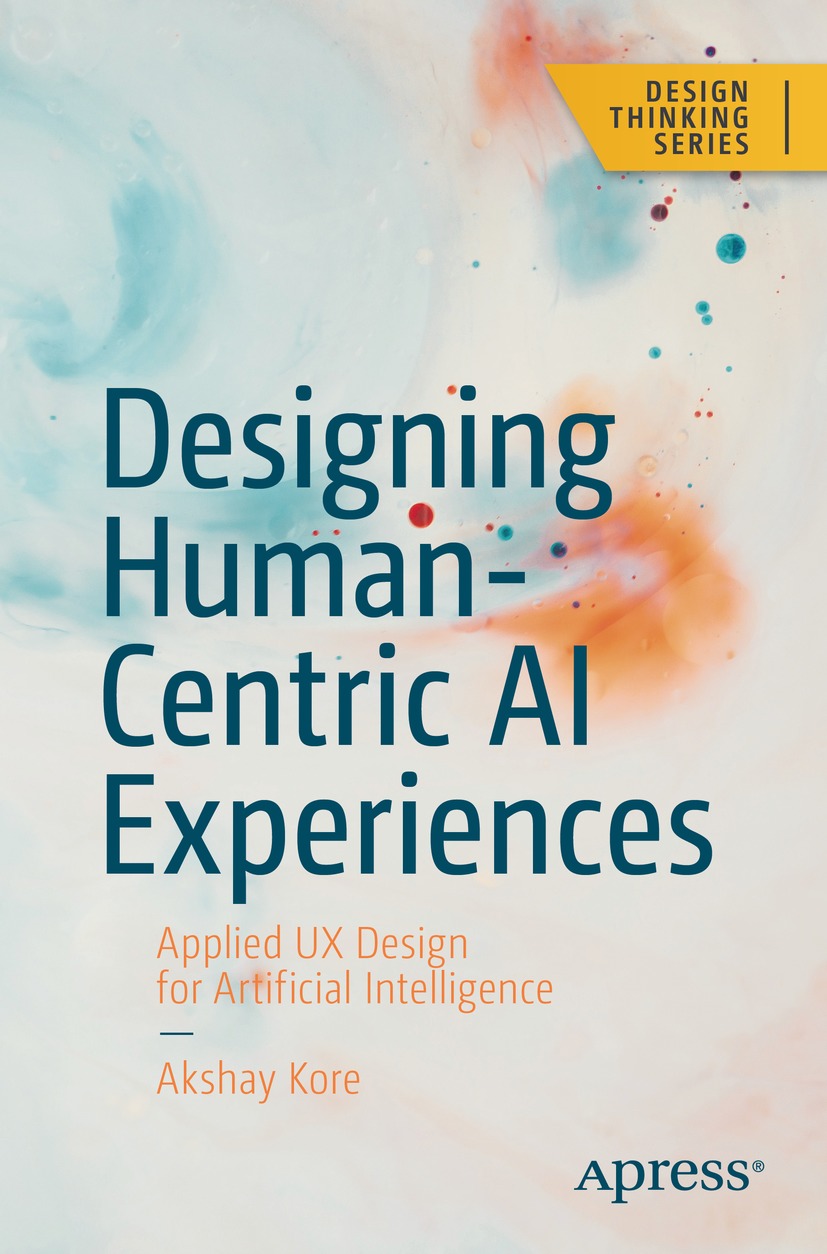

 A photo of two cats.
A photo of two cats.